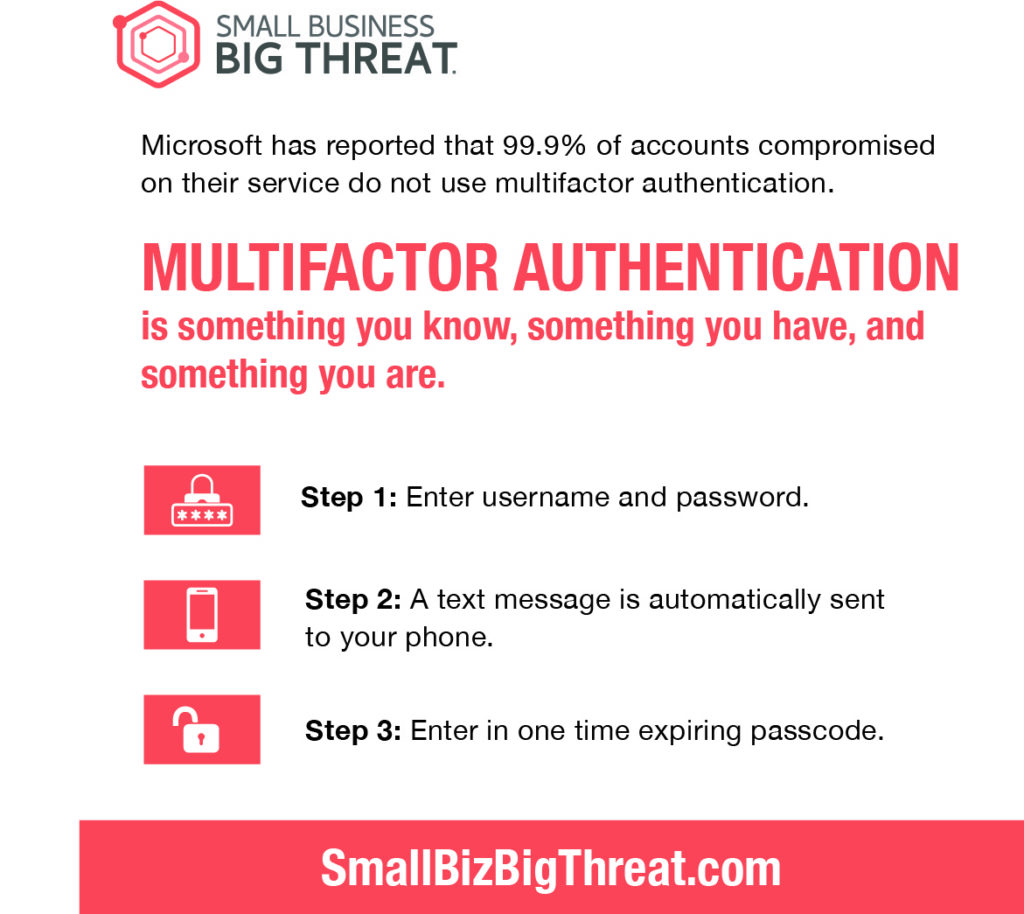So what is multifactor authentication? You may have heard of it, but you may not know what it really is. Spoiler, it is one of the best ways to secure your online business accounts! Microsoft has reported that 99.9% of accounts compromised on their service do not use multifactor authentication. While Google has found that 100% of automated bot attacks and 99% of bulk phishing attacks are prevented by simply adding a recovery phone number to your account.
Multifactor authentication adds additional layers of security when signing in to an account with a password. There are multiple ways to use multifactor, with one of the most common being a text message. After you enter in your password, the login account will send a text message to your phone with a one-time, expiring passcode to complete the login. This is the additional step to fully authenticate into your account.
Another way to define it
Multifactor is something you know, something you have, and something you are. Confused? Let me further explain. The term “something you know”, means your password while “something you have” could be your smartphone, usb dongle, or email account, and lastly “something you are”, means your finger or thumb print or other biometric method.
Multifactor in action
Here is an example of a possible multifactor authentication configuration:
Step 1: Enter username and password.
Step 2: A text message is automatically sent to your phone
Step 3: Enter in one time expiring passcode
How does multifactor authentication help?
The biggest thing it does is to help prevent unauthorized access to your business accounts. A secondary benefit is alerting you if someone is trying to login to one of your accounts. You can use multifactor authentication on most of your accounts, but these are the ones to really consider enabling it on:
- Banking & financial accounts
- Health/medical accounts
- Insurance accounts
- Social media
- Network and system accounts
For more on multifactor authentication and other cybersecurity tips for your small business, check out Small Business, Big Threat!
